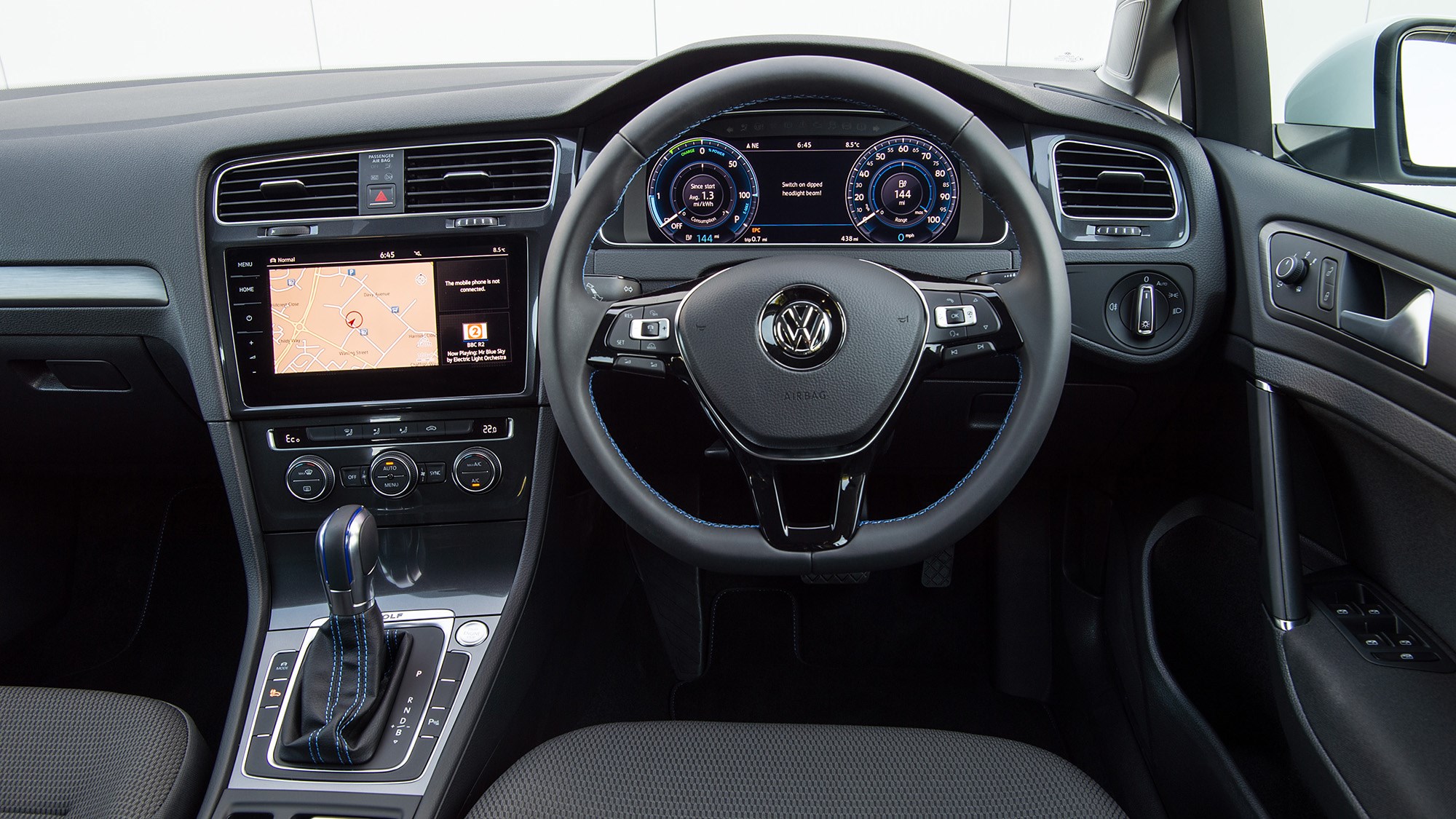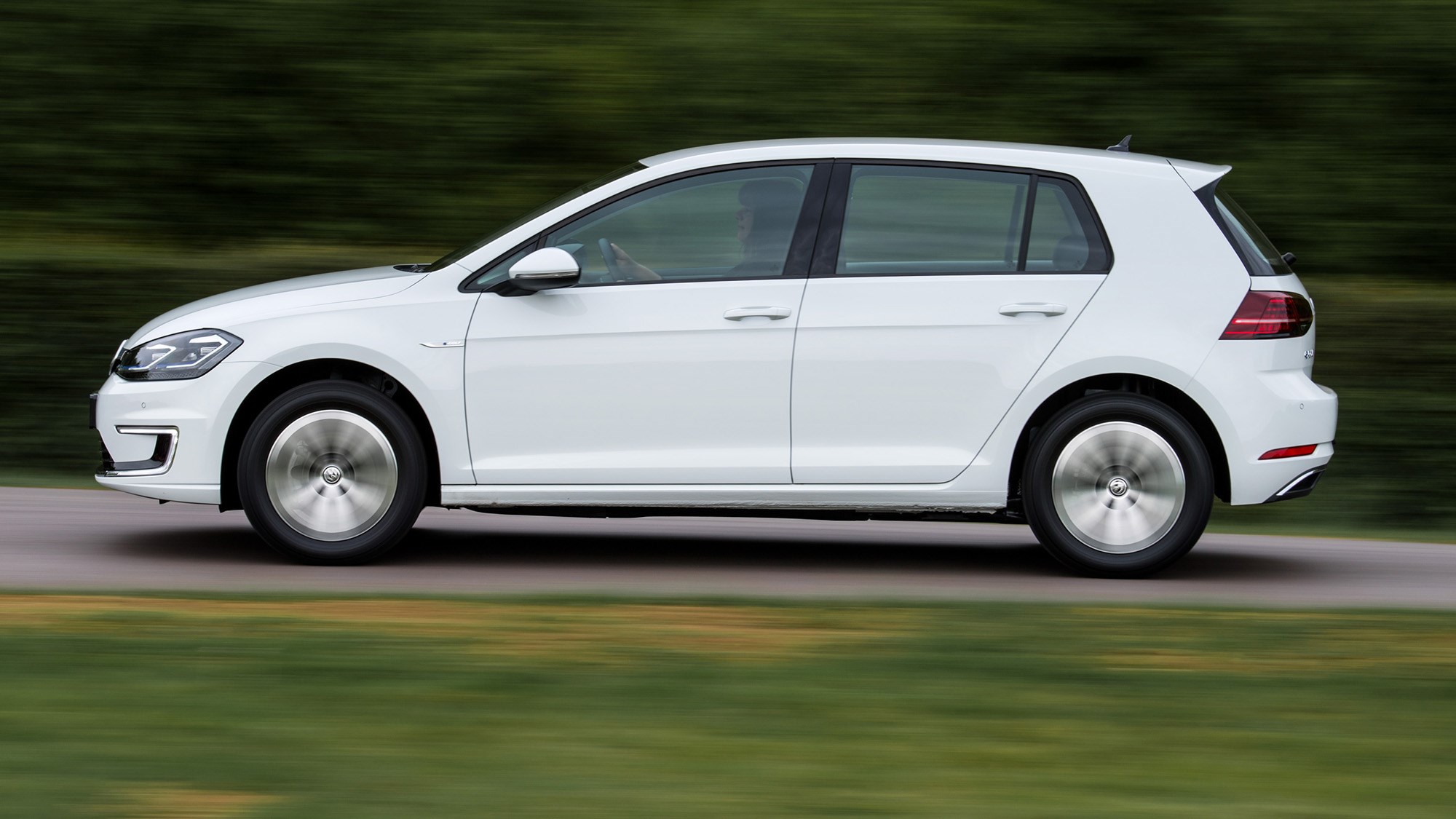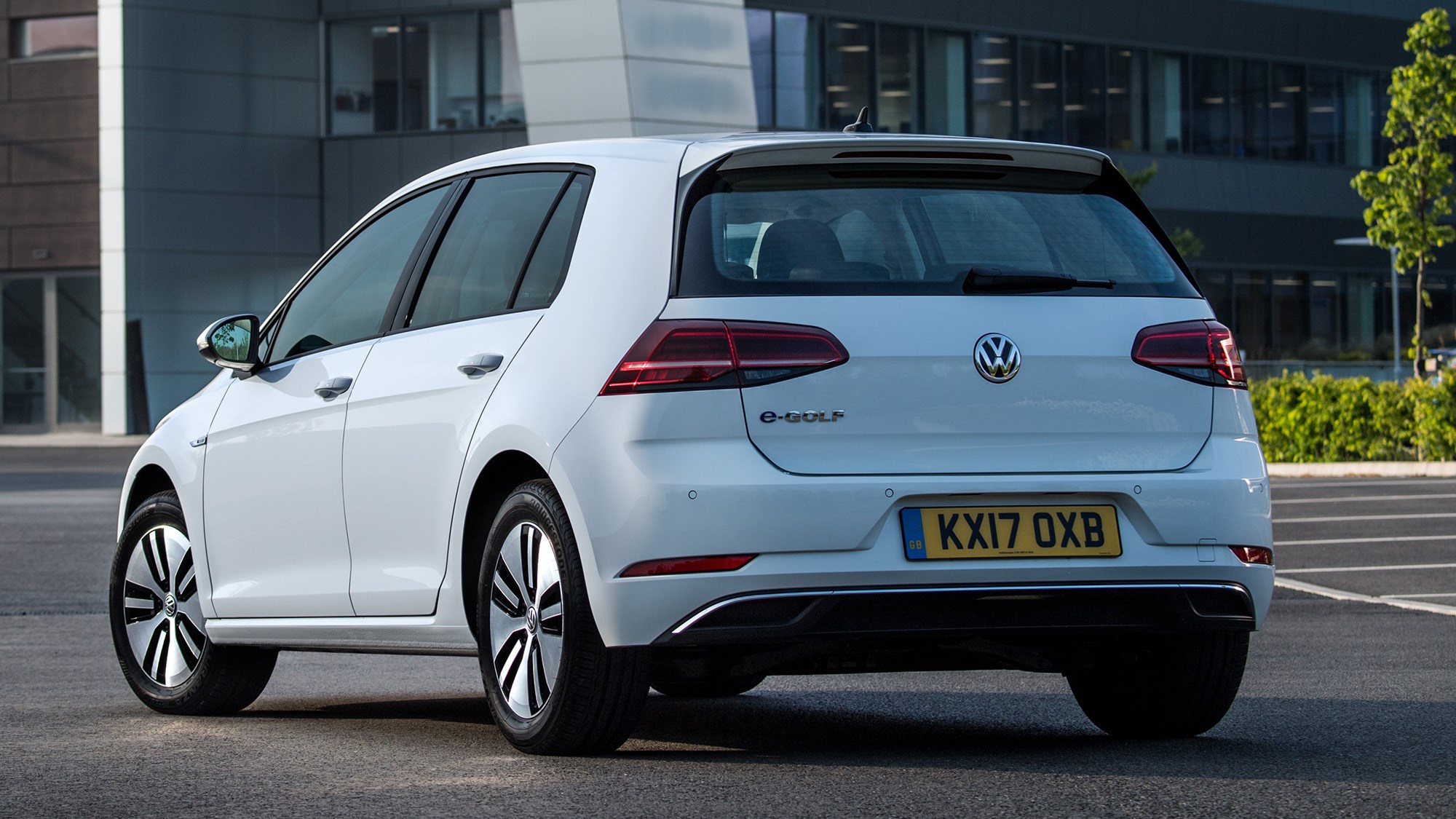► Our Volkswagen e-Golf full review
► Range of 186 miles lags behind rivals
► Easy to drive, high quality interior
Such is the frenetic pace of electric car development, the Volkswagen e-Golf, which only landed in the UK in 2018, has already been retired. Instead of soldiering on with a car that was never really designed to house an electric drivetrain in the first place, Volkswagen has spun off its EV range into the new ID family, where the ID.3 might well be the Golf-sized electric car you’re looking for.
This approach to electrification also means there won’t be another fully-electric Golf now the eighth-generation model is on sale.
But, while the e-Golf never really represented the bleeding edge of EV development, it works well as an electric car for those who put familiarity first and foremost – drivers who want an EV, but want it to look and feel very much like the family hatchback they’re already used to. And while the e-Golf can’t be bought new anymore, there are some good second-hand deals to be had.
So, before you decide to write it off out of hand in favour of the flimsy futurism of the Tesla Model 3 or proven Renault Zoe, let us spell out the good, the bad and the ugly of the Volkswagen e-Golf.
What’s under the skin?
The electric Golf was quite a step up over its 2014 predecessor, but lags behind rivals such as the Nissan Leaf e+ and Hyundai Kona Electric in terms of battery technology. But equipped with its 35.8 kWh lithium-ion battery, it still has decent energy density and is coupled to an efficient motor for an official range of 186 miles. We’ll get back to that. It also has reduced rolling resistance tyre technology from Bridgestone, and a slug of usable power.
Further reading: best electric cars 2020
It’s powered by a 134bhp e-motor capable of punting the hatchback to 50mph in 6.9sec and 62mph in 9.6sec. The battery’s an H-shaped creation wedged up under the front and rear seats and running forward into what would be the engine bay, where you’ll find the e-motor.
Familiar EV controls let you adjust the level of regenerative braking off the throttle, from low as standard to a level that allows for BMW i3-style single-pedal driving. Three drive modes are offered but the differences are marginal unless you choose Eco+, which gets you home but at the expense of any meaningful performance or air-conditioning.
What is the e-Golf’s range?
As with all other electric cars, this boils down to how you drive, what the road’s like, and even what the ambient temperature is. Thankfully, the e-Golf at least stands a chance if you’re careful. Dip into its ridiculously-accessible performance, and that 186-mile potential range will drop markedly. But to be fair on the e-Golf, this is the case with all EVs, and in line with similarly aged electric city cars, which also mainly have sub-200-mile ranges. Even today, while a top-of-the-range Renault Zoe manages an extra 50 miles on top of that, popular EVs like the Mini Electric and Honda E fall well short of the 200-mile benchmark.
To further help make the most of each charge, the e-Golf flashes up an icon to tell you when to back off and avoid needless acceleration and power draw – a nice touch but it’s common sense stuff really. In a 6000-mile long-term test conducted by Parkers.co.uk the e-Golf would return between 110-120 miles on a full charge in Normal drive mode. This will fall to 90-110 when the weather turns colder, or you’re heavy-footed – or doing lots of motorway driving.
The battery indicator suggests that a charge is good for an indicated 180 miles on a warm day, but it mis-reports unless you’re in Eco+ and driving at a snail’s pace. In winter, that indicated 180 (120 real-world miles) reduces to 160 (100 real-world miles).
Charging times are of course dependent on the grunt of the charger. Find a fast one and that drops to 45 minutes. The half-way house option is a wall-mounted charger from the likes of Pod Point. A 3.6kW charger costs £849 and takes 10 hours to fully charge the e-Golf, while Pod Point’s 7kWh charger is £949 and completes the job in six hours.
Second-hand buyers should be aware that the e-Golf was offered with an optional heat pump, which reduces the energy consumption of the heater unit by harnessing heat generated by the powertrain components – VW claims a 30% range improvement in winter conditions, although we haven’t seen such numbers in UK real-world testing. Regardless, it’s worth checking if the car you are looking at has the heat pump fitted or not.
What’s it like inside?

Like the old television advert, it’s just like a Golf. And that’s no bad thing at all, especially as VW positioned the e-Golf as a non-threatening EV for those scared off by its more radical (read oddly-styled) rivals.
You get a nicely built, classy cockpit with perfect ergonomics and Discover Pro infotainment as standard (the only Golf to do so at the time), with its beautifully crisp, responsive and glossy 9.2-inch touchscreen, complete with gesture- and voice-control functionality. Active Info Display, VW’s take on Virtual Cockpit digital driving instruments, was a £495 option when new and adds to the e-Golf’s sense of sophisticated refinement.
The battery robs a little boot space but only from the compartment beneath the boot floor, which most owners don’t use, and the passenger compartment goes uncorrupted.
What’s it like to drive?

This is very much one of the e-Golf’s major positive points. It’s an EV that’s good to drive, and manages to make you feel good about yourself – not something that can be said for its closest rival, the Nissan Leaf. There’s joy to be derived merely from the beautifully finished cockpit, the oily brilliance of the damping and the way the car pivots with the surprisingly clean, responsive steering.
Acceleration, from low speeds at least, is brisk, with overtaking an option should you need to, and this performance, together with the half-decent range, adds up to an EV that is more likely to generate a sense of smug serenity than the anxiety that can stem from some EVs lacking in speed, range and interior quality.
You sense the e-Golf’s slightly increased weight, but so sweetly is it distributed, and so nicely resolved is the chassis as a whole, that there’s none of the disconcerting wallow and waywardness often associated with battery-stuffed EVs. The e-Golf may lack an engine, but to drive it’s very much still a Golf.
The eerie quiet you expect of an EV – the decent real-world performance, cohesive dynamics and compelling fundamental togetherness you perhaps don’t. There’s no wide-eyed, Tesla-spec performance here, but there is a compelling, very classily-executed everyday car.
Verdict
Although it’s no longer available as new, there’s still a lot to like about the Volkswagen e-Golf. A lot of what we like about it holds true for all Mk7.5 Golfs, but its quality, usability and sheer unruffled sense of calm all combine to make this a really likeable EV. If you’re an EV virgin and you’re able to charge at home, this could be the car that weans you off petrol or diesel and into a new, more hushed, world.
It’s a shame that it only has a real-world 120-mile battery range. Many EVangelists would say that this isn’t a problem for most owners as they’ll probably deal with a short commute, but in the real world, there are times you need to go a little further. And in that instance, it’s beaten by the Nissan Leaf and Hyundai Kona Electric.
But, if an e-Golf fits into your world, and you have access to your own chargepoint then it’s an excellent choice that’s well worth recommending, especially when going down the secondhand route and discovering a low-mileage used example.
